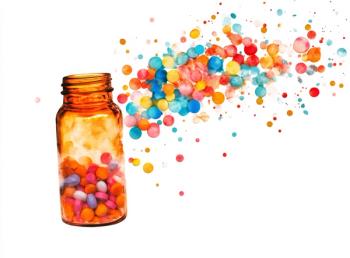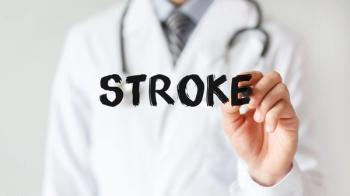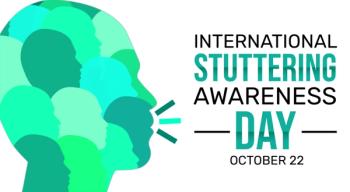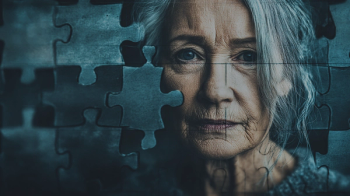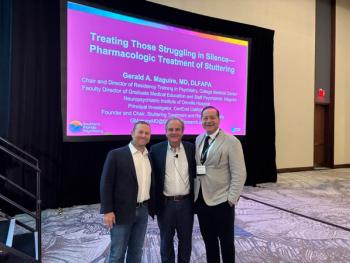
- Vol 37, Issue 11
- Volume 37
- Issue 11
Neuropsychiatric & Medical Sequelae of COVID-19
Learning from past disasters, psychiatrists are taking center staet in helping patients, family members, first responders, and other health care professionals affected by the COVID-19 pandemic.
THE NEXT CHAPTER
Although we are almost a year into the coronavirus disease 2019 (COVID-19) pandemic, there is still much about the virus that we do not know. Post-recovery patients are likely to suffer substantial sequelae, but it is difficult to say exactly what these might be. To better understand and anticipate such, investigators are reviewing data from patients who recovered from sepsis. Research shows previously septic patients have increased mortality, physical disabilities, cognitive impairment, recurrent infections, and overall health deterioration for at least the following 2 years.1 The pandemic's impact will likely trigger enormous aftershocks in recovery and rehabilitation services. Anticipating possible scenarios now will help psychiatrists and other medical professionals prepare for effective treatment later.2
Post–COVID-19 neuropsychiatric sequelae
Patients who recover from acute COVID-19 can experience a variety of neuropsychiatric manifestations.3,4 For individuals with mild to moderate infections, the most common symptoms include headache, altered smell and taste, cough, asthenia, and myalgia. Regarding smell and taste, these dysfunctions occurred at rates of 85% and 88%, respectively. When severe illness occurs, reports of encephalopathies, encephalitis, seizures, neuromuscular disorders, Guillain-Barré syndrome, and other neuropathies were reported in about 36% of patients.
In a
Patients who have recovered from COVID-19 experience a wide range of psychiatric issues, including posttraumatic stress disorder (PTSD), depression, insomnia, anxiety, and suicide.4 If we use data from patients with ARDS with ICU admissions as a predictive model, the incidence of psychiatric sequelae was found to be 22% to 24% for PTSD, 26% to 33% for depression, and 38% to 44% for generalized anxiety.1 A significant risk factor for these patients was the presence of premorbid psychiatric illnesses. Family members also can experience PTSD, depression, and anxiety while adjusting to their new roles as caregivers.
A recent study of patients who had COVID-19 (N=402) noted 55.7% had at least 1 psychiatric-related condition with the symptoms found in the
It was
Because of the acute and chronic stress conditions that accompany the mental health consequences for survivors and their families, the psychological sequelae may persist for months or years. Individuals who had COVID-19, and especially those who had severe COVID-19 illness, are at an increased risk of suicide.6 The suicide rate in the United States has been steadily increasing from 1999 to 20177, and the COVID-19 pandemic adds a suicide risk factor that providers need to monitor. Factors that increase suicide risk in context of COVID-19 include economic problems, social isolation, and uncertainty about the future, as shown in
It is unknown whether COVID-19 can exacerbate or increase risk for other neuropsychiatric effects. A
Post-intensive care syndrome
Patients with COVID-19 and severe respiratory impairment must remain on mechanical ventilators for longer time periods than the typical ICU admission.5 Recovery from the ICU can lead to short- and long-term consequences that stem from the post-intensive care syndrome (PICS). A summary of the PICS risk factors and neuropsychiatric and physical impairments are presented in
Complications that affect
Practical applications for managing symptoms
As patients recover and are discharged from hospitals, they face many challenges in the short- and long-term management of their mental and physical rehabilitation. Interdisciplinary team treatment approaches will be necessary. The medical sequelae from COVID-19 will determine initial short-term rehabilitation needs (eg, respiratory system) and its comorbidities (eg, hypertension, diabetes) and form the treatment plans. At discharge, clinicians should establish treatment plans that can be continued at another facility or with home health services. Mental health services should be an integral aspect of the patient’s overall treatment plan with continued assessments during physical rehabilitation. The presence of PTSD, depression, anxiety, or other psychiatric symptoms should be detected as early as possible with appropriate treatment programs incorporated for at least the first 2 years following infection.
Cognitive
Access to physical and mental health care services for patients who have recovered from COVID-19 is a major concern. This is particularly true for minority populations, as COVID-19 infections disproportionally affect African-American and Latino patients.11 These 2 populations are 2 to 3 times more likely to know someone who died from COVID-19 than white individuals. Their recovery and rehabilitation should include culturally competent services along with technological support for internet, smart phones, or tablets necessary for telemedicine.
Concluding thoughts
The COVID-19 pandemic has revealed significant weaknesses in our health care system, from public health preparedness to the structure of our medical facilities and the need for long-term rehabilitation.12 A rational systematic approach to a pandemic with lessons learned from the past can provide guidance. Mental health services play a vital role in treating patients, family members, first responders, and health care professionals.13
The impact of COVID-19 will reverberate for many years. For example, PTSD, depression, anxiety, and other disorders remain among post-9/11 first responders and individuals in New York City nearly 20 years after the attacks.14 Identifying disaster-related stressors that predict physical and mental health adversity after natural disasters such as Hurricane Katrina can also be applied to the COVID-19 environment.15 One to 4 years post-Katrina, lack of medications, medical care, safety, and bereavement were the main stress predictors for PTSD, psychological distress, and physical symptoms. The belief that an individual’s life was in danger continued to predict PTSD at 12 years after the disaster.15
Both 9/11 and Hurricane Katrina were acutely short in duration, yet they had long-term health consequences. The COVID-19 pandemic began in late 2019 and will continue for the foreseeable future. Learning from past disasters, health care systems need to minimize any lapses in services for medical care, mental health care, and medications. Policy makers need to provide infrastructure support for the economic and technological sustenance of our society for years, as COVID-19 has changed our way of life. Psychiatrists and other mental health professionals should be prepared for the short-term (less than 2 years) and long-term (more than 2 years) management of patients and others affected by the pandemic. Psychiatry has faced unusual tasks during the COVID-19 pandemic, with increasing distress among our society that has led to increasing rates of depression, anxiety, and other mental health conditions. This trend will likely continue, and close collaboration between primary care providers and mental health professionals will be needed.16
Dr Jann is professor of pharmacotherapy at the University of North Texas System College of Pharmacy and founder of Jann Medical Writing.
References
1. Sheehy LM. Considerations for postacute rehabilitation for survivors of COVID-19. JMIR Public Health Surveill. 2020;6(2):e19462.
2. Grabowski DC, Joynt Maddox KE. Postacute care preparedness for COVID-19: Thinking ahead. JAMA. 2020; 323(20):2007-2008.
3. Dinakaran D, Manjunatha N, Naveen Kumar C, Suresh BM.
4. Mazza MG, De Lorenzo R, Conte C, et al.
5. Stam HJ, Stucki G, Beckenbach J, et al. COVID-19 and post intensive care syndrome: a call for action. J Rehabil Med. 2020; 52: jrm00044.
6. Sher L. The impact of the COVID-19 pandemic on suicide rates. QJM. 2020 June15:hcaa202.
7. Hedegaard H, Curtin CC, Warner M. Suicide mortality in the United States, 1999-2017. NCHS Data Brief. 2018; 330:1-8.
8. Kajani R, Apramian A, Vega A, et al.
9. Young Mj, O’Hare M, Matiello M, Schmahmann JD. Creutzfeldt-Jakob disease in a man with COVID-19: SARS-CoV-2 accelerated neurodegeneration? Brain Behav Immun. 15:S0889-1591(20)31522-1.
10. Brooks SK, Webster RK, Smith LE, et al. The psychological impact of quarantine and how to reduce it: rapid review of the evidence. Lancet. 2020; 39: 912-920.
11. Johnson SF, Tiako MJN, Flash MJE, et al. Disparities in the recovery from critical illness due to COVID-19. Lancet Psychiatry. 2020; 7:e54-e55.
12. Tandon R. COVID-19 and mental health: preserving humanity, maintaining sanity, and promoting health. Asian J Psychiatry. 2020; 51:102256.
13. Pfefferbaum B, North CS. Mental health and the COVID-19 pandemic. NEJM. 2020; 383:510-512.
14. DePierro J, Lowe S, Katz C. Lessons learned from 9/11: mental health perspectives on the COVID-19. Psychiatry Res. 2020; 288:113024.
15. Raker EJ, Zacher M, Lowe SR. Lessons from Hurricane Katrina for predicting the indirect health consequences of the COVID-19 pandemic. PNAS. 2020; 117:12595-12597.
16. Öngür D, Perlis R, Goff D. Psychiatry and COVID-19. JAMA. 2020;324(12):1149-1150. ❒
Articles in this issue
about 5 years ago
Discharge Planningabout 5 years ago
Patients Like Telehealth, But Barriers Still Persistabout 5 years ago
Nitrous Oxide and Alexander Hamilton’s Grandsonabout 5 years ago
Psychiatry’s Role in the Management of Chronic Painabout 5 years ago
Sleep Disturbances as a Sequalae of Chronic Painabout 5 years ago
What’s in a Name: The Problem with Zero Suicideabout 5 years ago
Treating Dementia Patients in the Time of COVIDabout 5 years ago
Can Exercise Decrease Mortality Risk in Patients With Depression?Newsletter
Receive trusted psychiatric news, expert analysis, and clinical insights — subscribe today to support your practice and your patients.

